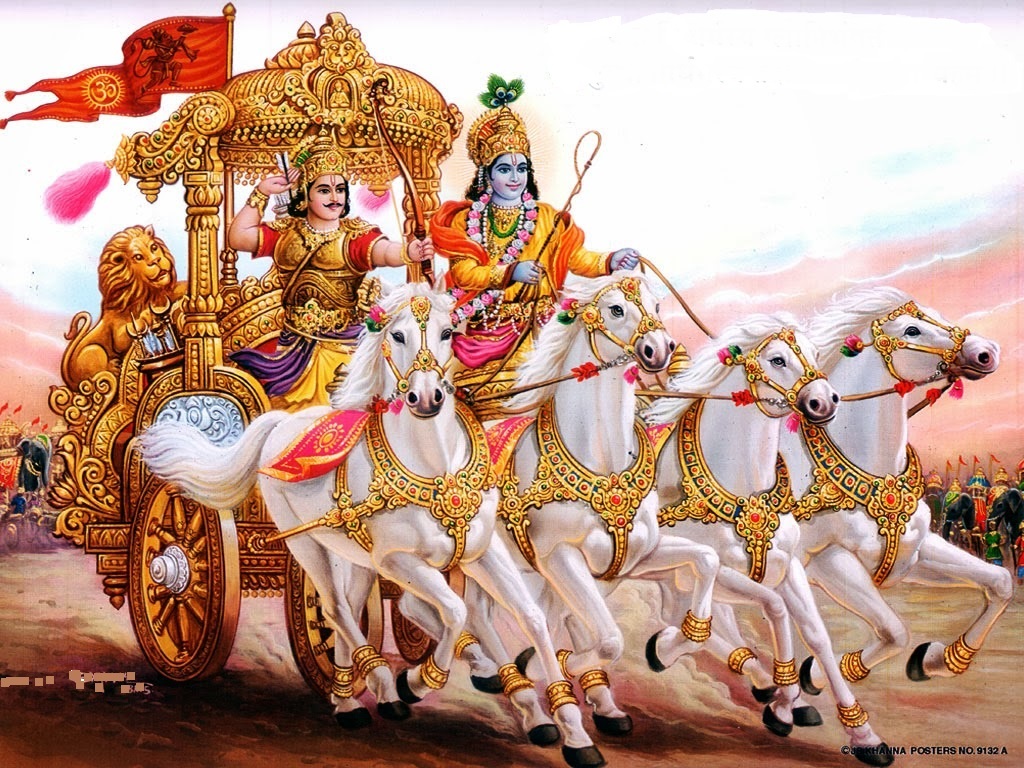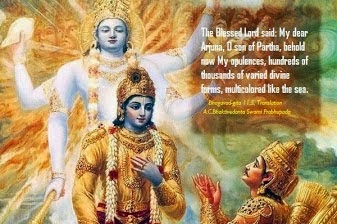The Relevance of the Bhagavadgita to Humanity 10-6: Swami Krishnananda.
Wednesday 16, April 2025, 10:30.
The Relevance of the Bhagavadgita to Humanity:10-6.
Chapter 10: The Need for Sankhya-6.
The First Six Chapters of the Bhagavadgita:
Swami Krishnananda
(Spoken on Bhagavadgita Jayanti
===================================================================================
Actually, what we call the world is nothing but an outsideness in the mind. If the outsideness has vanished and is not there, then there is no world. Imagine a condition where externality is lifted up. Let the mountains be there, let the trees be there, let the sun be there, let the moon be there, let the river be there, but externality is not there. The world ceases to be, in one second. The world is nothing but externality. It is not a substance. Inasmuch as externality is necessary for experience of the world, and externality itself is not a substance, the world is considered as unsubstantial. It does not exist as a substance. This is one side of the matter.
The other side is that the forces of prakriti – the gunas sattva, rajas, tamas – in a dramatic manner become the subject as well as the object, as the magician became the performer as well as the rope on which he was climbing. Or, to give another example, in a dream you are pursued by a tiger, so you run and climb a tree. This tiger is nothing but your mind, and the space between, the distance between the tiger and the tree is your mind, the process of running is your mind, the tree is your mind, the climbing is your mind, and you have become an individual involved in this process by the activity of your mind. Such a drama can be performed by your mind by creating a spatial and temporal distance, bifurcating the seer and the seen, the actor and the acted, the tiger and the man, and so on. Likewise, the forces sattva, rajas, and tamas act as a subjective propulsion of sensory action, and also an objective location of things which the senses attract.
Thus, the attraction of the sense organs and the mind in respect of objects outside is nothing but the forces attracting forces, the gunas moving among gunas: guṇā guṇeṣu vartanta iti matvā na sajjate (BG 3.28). Knowing that there is no such thing as your wanting an object, no such thing as the senses coming in contact with things, but only the same force subjectively colliding with the same force objectively, as it were – knowing that even this so-called colliding or coming in contact of the subjective side with the objective side is made possible by another drama of there being a space and time in between – knowing this, the wise one is not attached to anything in this world.
You say “I shall do”, “I shall not do”. These kinds of statements have no meaning, because you are not there as an isolated person to make statements of this kind. Prakriti is the doer of all things. Prakṛtis tvāṁ niyokṣyati (BG 18.59): Knowing that the whole world is a manipulation of the forces of prakriti, neither does one get attached to anything, nor does one make any statement of a positive or negative nature; neither does one love anything, nor does one hate anything. The question does not arise because there is no question of even one's own independent existence in this world as a doer of action. You are not an independent doer of actions. Here is the crux of the philosophy of the Bhagavadgita. You are not an independent doer. The agency or independent doership that you attribute to yourself is a fallacy. It is not possible because of the fact of your involvement in the total setup of the forces of prakriti. The universe is doing something, and you are not independently doing anything.
So we enter into the Third Chapter of the Bhagavadgita, which is a beautiful presentation before us of our duty in this world. Some of the chapters are to be read especially with intensive concentration. For instance, the Third Chapter which explains the whole philosophy of action, the Thirteenth Chapter which concentrates more on the analytical, philosophical side of things, the Ninth, Tenth and Eleventh Chapters which describe the glory of the Almighty and the magnificence of the Creative Principle, and Chapters Five and Six which hinge upon concentration and self-integration process, all these are to be especially studied. The First and Second Chapters act as a kind of introduction to the whole theme, and the actual working of the entire structure of the teaching of the Gita is now to be commenced from the Third Chapter.
*****
Next
Chapter 11: Participating with the Intention of the Universe
Continued








Comments